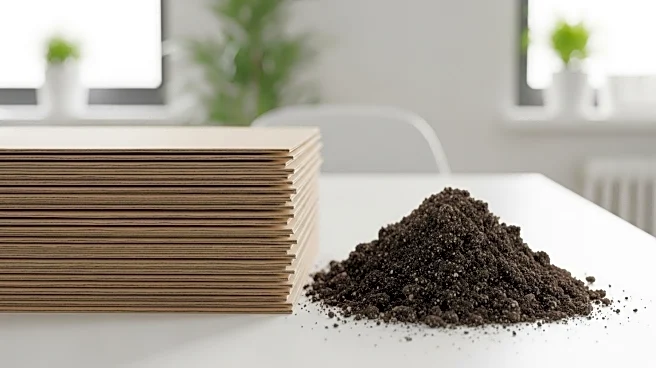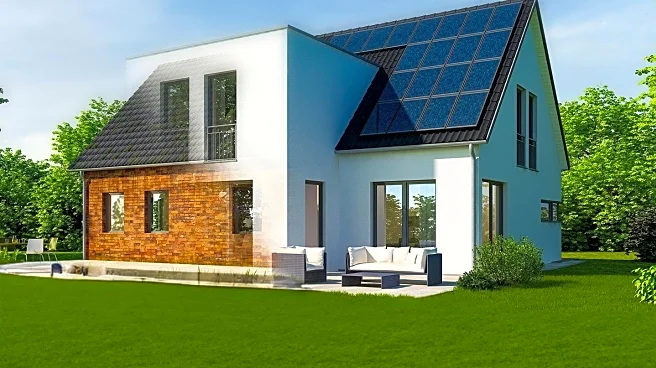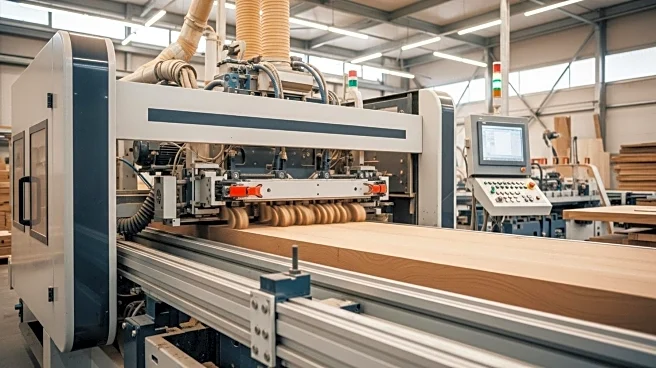What's Happening?
An innovative team from RMIT University has created a new building material composed of cardboard, water, and soil. This material is designed to be both reusable and recyclable, offering the durability of rammed earth combined with the versatility of cardboard. The development aims to address the environmental impacts associated with traditional building materials, such as cement and concrete, which contribute significantly to global emissions. The new material can be used to construct walls robust enough to support low-rise buildings and can be produced onsite by compacting the soil and water mixture inside cardboard formwork. The team is currently seeking industrial partners to advance their invention.
Why It's Important?
The introduction of this eco-friendly building material has the potential to significantly reduce the carbon footprint of the construction industry. Cement and concrete production are responsible for approximately 8% of global emissions, and the new material offers a sustainable alternative with only a quarter of the carbon footprint and less than a third of the cost compared to concrete. This innovation aligns with global net-zero goals and reflects a growing interest in sustainable, locally sourced materials. It could revolutionize building design and construction, making it easier to recycle and reducing reliance on non-renewable resources.
What's Next?
The RMIT team is actively seeking industrial partners to help bring their invention to market. This collaboration could lead to the widespread adoption of the material in construction projects, particularly in areas where environmental sustainability is a priority. The success of this material could inspire further research and development in eco-friendly building solutions, potentially influencing industry standards and practices.
Beyond the Headlines
The development of this material highlights the importance of innovation in addressing environmental challenges. It underscores the potential for traditional industries to evolve and adapt in response to climate change and resource scarcity. The use of locally sourced materials not only supports sustainability but also promotes economic resilience by reducing dependency on imported goods.










